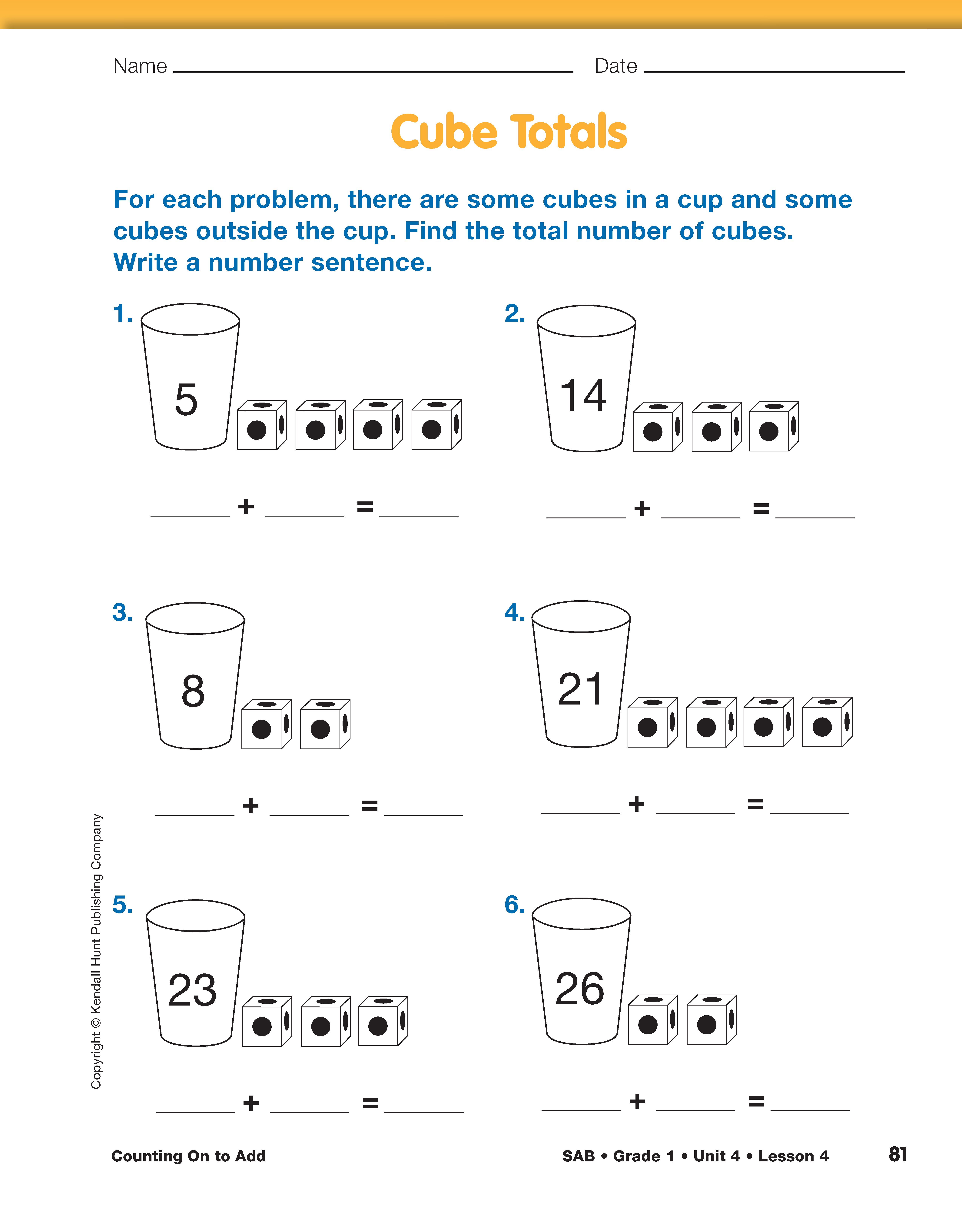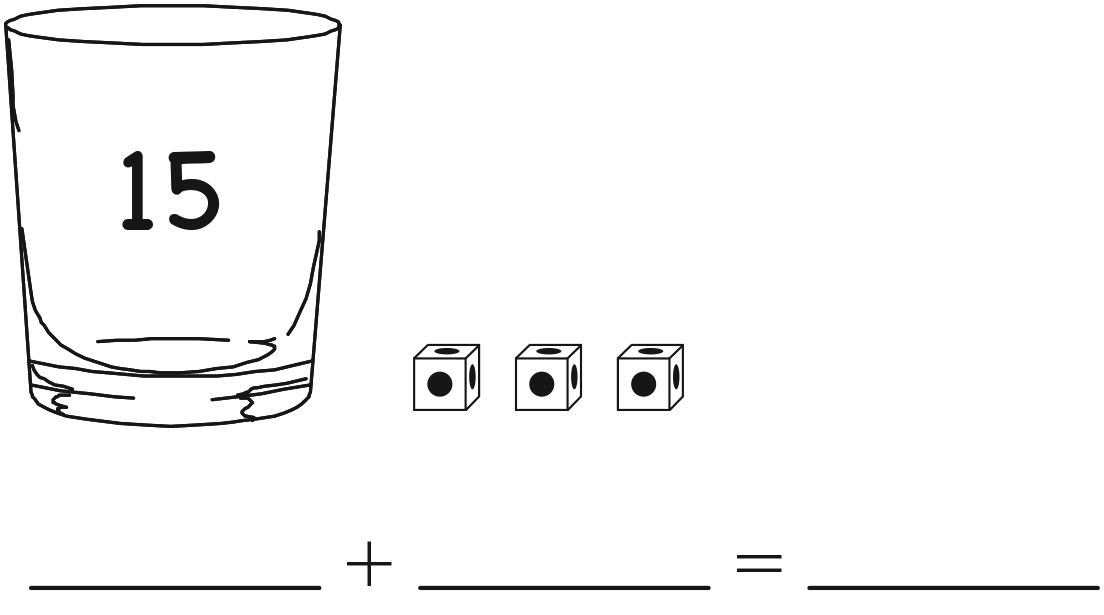Extend the strategy by introducing counting-on from
two-digit numbers. Show students that you are placing
fifteen cubes in a cup. Draw a cup with the
numeral 15 on it on chart paper or the board. Write
only the numeral. Do not draw fifteen cubes. Place
3 cubes next to the cup. Draw 3 cubes next to the
cup on the chart. See Figure 3.
- Fifteen cubes in the cup and three cubes outside
the cup are how many cubes altogether? Use a
counting-on strategy to find out. (18; 15, 16, 17,
18)
- Show how to use the classroom number line to
check this answer. (I start at 15 and then hop
3 units, 16, 17, 18.)
- Count all the cubes and see if you get the same
answer.
- Write a number sentence on the chart that
matches this problem. (15 + 3 = 18)
- What does the 15 in the number sentence represent?
The 3? The 18? (the cubes in the cup; the
cubes next to the cup; the total number of cubes)
Repeat the process with more addends ranging from
11 to 20, adding 0–9 cubes on.
Assign Cube Totals in the Student Activity Book for
students to complete individually. Allow students to
use connecting cubes.
Use Cube Totals to assess students' abilities to solve single-digit
and 2-digit plus one-digit addition problems using the
counting-on strategy [E5, E6], compose and decompose
numbers [E1], and represent addition situations with number
sentences [E7].
The Counting-On Game can be used to provide targeted
practice with the counting-on strategy [E5]. See the variation
described in the Meeting Individual Needs box.















